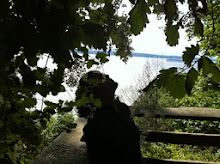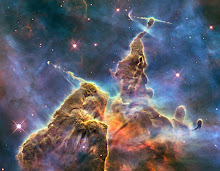I remember Sewa Nagar. The roadside stalls selling fruits, cheap plastic combs, sunglasses and the usual stuff you never think about because in India it’s always available somewhere close to you. It may catch your sight as you zip by in your car. And then you’d ask your driver to run and buy 2 kilos of those delicious looking mangoes or say “aarey litchi bazaar mein aa gaye. I didn’t even realize. How time passes?” Or you maybe sitting all bundled up in the bus, trying to protect yourself as best as you can from the man sitting next to you lest any part of his body touches yours, when your eyes fall on a pheriwallah and his cart brimming with belts, handkerchiefs, socks and combs. And you’d suddenly realize “Oh shit! I need to buy a new belt.”
I remember Sewa Nagar for what it was. A street with vendors occupying a small space on the pavement and offering a whole world of goods and services to a city with no time to think. So that people needn’t make a special effort to get something as simple as a comb. Where at lunch hour guys from the local ad agency and the rickshaw pullers could rush for its 8 rupees lunch of hot and cooked-right-before-your-eyes baingan bharta and chapatti. Or the 5 rupees choola kulcha with lots of lime and green chilies. Or to just stop by to get the shoe mended before a meeting. Or a punctured tyre repaired. Or simply for a pudiya of peanuts to pass the time while waiting for the bus or the light to turn green.
I remember Sewa Nagar for what it is. A pheri bazaar in any city of India. A means of sustenance for those who exercise their right to a livelihood with dignity. A place where the carwallah and the cyclewallah are equally welcome. A place that reminds you of the passage of seasons even though the daily drudgery of life may seem monochrome. Diwali Diyas, Summer Mangoes, Monsoon cheap umbrella. A place where you can assess the clout of Gods and film stars by analyzing whose poster is given place of prominence. A kaleidoscope of popular culture. A place where the marginalized millions can measure how they get shortchanged daily when their earning of 30 rupees diminishes rapidly in value.
Then suddenly one day I see Sewa Nagar for what it has become. Not a small nondescript street market but an arena for the play of larger than life egos. A hopelessly one-sided confrontation between the pheriwallahs and the police, the courts, the politicians, the drivers of big cars. A question of who decides who has the right to a livelihood and who doesn’t. Or the right to reside in a city. A measure of the great tectonic shift in how a city chooses to define itself. A symbol of our dying empathy. A wistful shake of our heads at all the madness and colour and culture we wish to let go of and for what. A Haldighati for reclaiming the soul of a nation.
I remember Sewa Nagar for what it was. A street with vendors occupying a small space on the pavement and offering a whole world of goods and services to a city with no time to think. So that people needn’t make a special effort to get something as simple as a comb. Where at lunch hour guys from the local ad agency and the rickshaw pullers could rush for its 8 rupees lunch of hot and cooked-right-before-your-eyes baingan bharta and chapatti. Or the 5 rupees choola kulcha with lots of lime and green chilies. Or to just stop by to get the shoe mended before a meeting. Or a punctured tyre repaired. Or simply for a pudiya of peanuts to pass the time while waiting for the bus or the light to turn green.
I remember Sewa Nagar for what it is. A pheri bazaar in any city of India. A means of sustenance for those who exercise their right to a livelihood with dignity. A place where the carwallah and the cyclewallah are equally welcome. A place that reminds you of the passage of seasons even though the daily drudgery of life may seem monochrome. Diwali Diyas, Summer Mangoes, Monsoon cheap umbrella. A place where you can assess the clout of Gods and film stars by analyzing whose poster is given place of prominence. A kaleidoscope of popular culture. A place where the marginalized millions can measure how they get shortchanged daily when their earning of 30 rupees diminishes rapidly in value.
Then suddenly one day I see Sewa Nagar for what it has become. Not a small nondescript street market but an arena for the play of larger than life egos. A hopelessly one-sided confrontation between the pheriwallahs and the police, the courts, the politicians, the drivers of big cars. A question of who decides who has the right to a livelihood and who doesn’t. Or the right to reside in a city. A measure of the great tectonic shift in how a city chooses to define itself. A symbol of our dying empathy. A wistful shake of our heads at all the madness and colour and culture we wish to let go of and for what. A Haldighati for reclaiming the soul of a nation.


















No comments:
Post a Comment